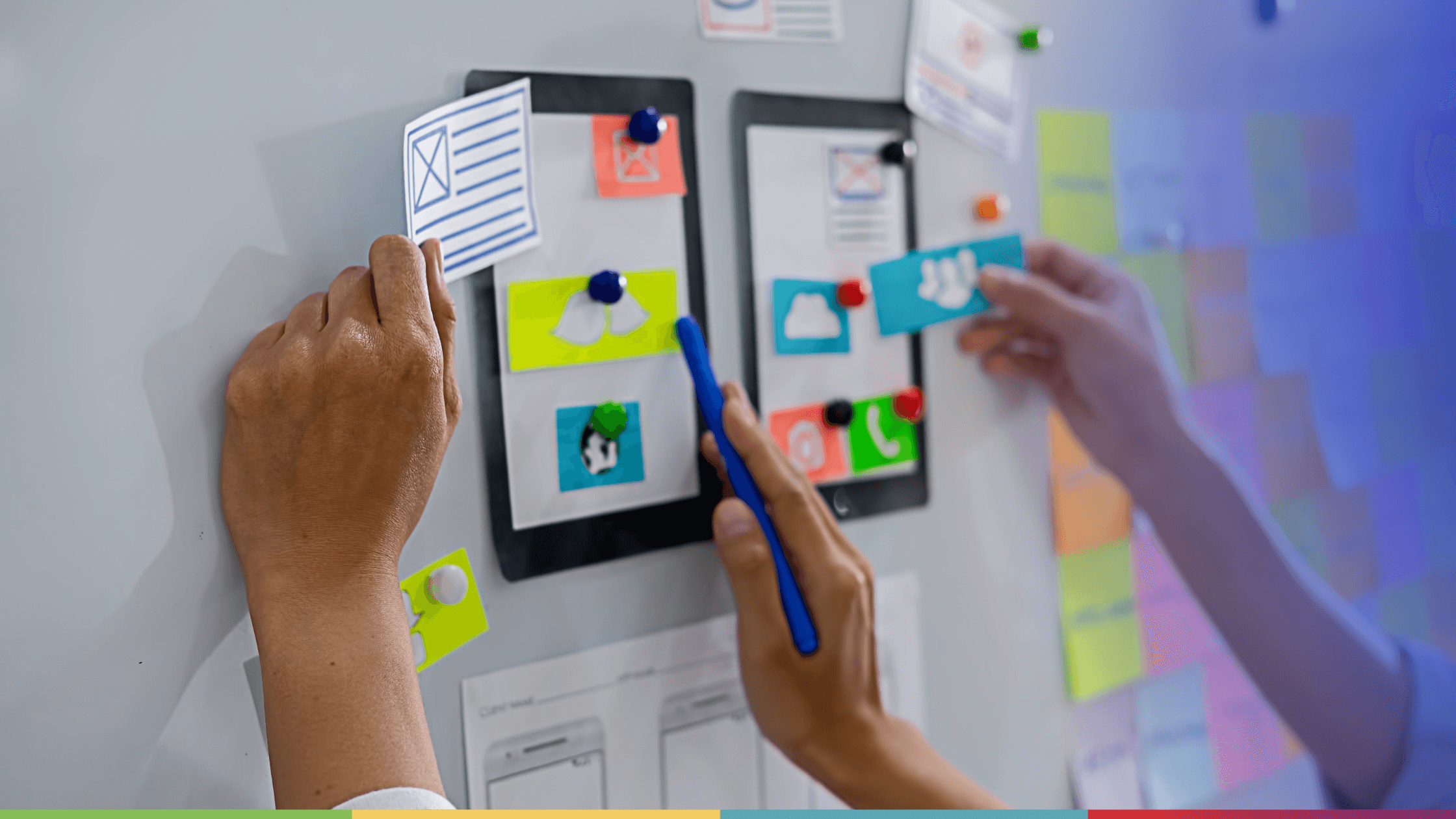Although we work with high-end technologies and our main focus is on the engineering part of the process, the truth is we value immensely great design that is fully responsive, ultimately improving the user experience.
We gathered some very important insights when it comes to being able to deliver great design implemented in digital products.
1. Think ahead.
Before beginning with your project, try to talk to strategic people in order to gather as much technical information as you can. Now you may ask: who are these strategic partners exactly?
To begin with, client “stakeholders”, of course. Align your ideas with their expectations and try to understand what is their knowledge about the company, product, customers, and competitors. They, better than no one, will be able to give you an overall view of what they need and expect from you.
Understand what’s at stake, both for you and your client. If you fail to understand them and deliver the wrong product, you lose the client’s trust and the client loses his initial investment and the opportunity to conquer new customers. It’s a never-ending cycle.
That is why being very down to earth from the very beginning is so crucial to the whole evolving process.
Then you have obviously the end-users, which are also considered to be strategic people you need to understand. At the end of the day, they are the ones who will indeed use the product.
2. You are not the user.
Avoid focusing too much on your assumptions. Your goal is to deliver a Human-Centered Design, and sometimes solely your experience and opinions might not be enough.
Always remember: you are not your user.
3. Know how to be concise and summarize.
Define with clear and short words your “problem statement” and the business/client goals. Sometimes, being a designer in a tech company can be challenging because your creativity must have specific boundaries, otherwise, you will focus too much on UI and neglect some very important aspects of UX.
4. Idealize your work.
Sketch & explore possible ways to provide a great user experience. In this phase, think about the functional flow. It’s wireframing time! This part is essential to have an overall view of the product. It helps you and the customer to fully see what will be done and what still needs to be improved or developed.
5. Already have a great flow? Now what?
Now look for references, aesthetics, UX/UI patterns, and overall inspirations. The research will be a huge part of your creative process until the very end. Try to find out how other great products have already solved similar issues. Research, research & more research. Be aware that what sets an incredible designer from an okay one is the ability to add more value to the final product. At this stage, you have to put all your knowledge on the table and make sure you find the best design style guide to dress your client’s product. This is where you are finally able to take your wings and fly. Let the real creativity kick in.
Be aware that the end result is obviously the main focus, but the relationship you create and nurture with your client is an enduring connection. This brings us to the next topic.
6. Design process.
You are the one who has to be able to fully feel and see the client’s brand attributes, the product, and to interpret the user expectations. Your client might not be a design professional but he is definitely a professional in his own business. Let your client be a part of your creative process and allow him to contribute with technical expertise. As we said previously, communication is key in every relationship. Sounds a bit basic saying it, right? But the truth is being a great designer is also having the ability to integrate the customer in the journey, ask the necessary questions, and to point out the existing flaws.
Manage their expectations. Be perceptive enough to understand the vanities & preferences of the customer and add it to your proposal, BUT find the perfect balance between what the customer wants and what you find correct design-wise. You are responsible for delivering a fluid product. Never jeopardize your workflow.
7. Don’t give up.
We never get everything at our first attempt. That’s life and we’re just people.
At the beginning of every process, something will always feel out of place. When that happens, don’t give up, and just embrace that it is really part of the evolution’s process of the product you’re about to deliver. Go research (see? Never over). Meet with the rest of the team and expose your difficulties to them. Don’t have a team? No problem. Google it. Sounds a bit rough but the truth is there’s tons of solutions and information available to you online. You just have to know where to look.
8. Test your prototype and improve it.
This is the fun part. It can either all go smoothly or you’ll realize you still have a lot of little things to do. Either way, this stage is fundamental to the success of your project. Considering you are not the end-user, test it with your colleagues. Surely they will give you valuable feedback.
Test, improve, repeat.
9. Now, the engineers!
Make sure to make a smooth handover to your fellow developers. This is where design and engineering come together and create something useful to your customer in a beautiful & usable way. That is why design and development come hand in hand. The designers must have a very attentive eye and be very down to earth in spite of the creativity flowing. And the engineers must be sensitive enough to understand and implement the usability designed.
Also, don’t feed the unnecessary rivalry between designers and engineers. They complement each other. Not the other way around.
10. Breathe! 🙂
Easy-peasy-lemon-squeezy.
Your day-to-day can get challenging but it is an incredibly rewarding feeling that your work is contributing significantly to many tech advancements in so many different industries.
You’re doing great.
Have fun.















